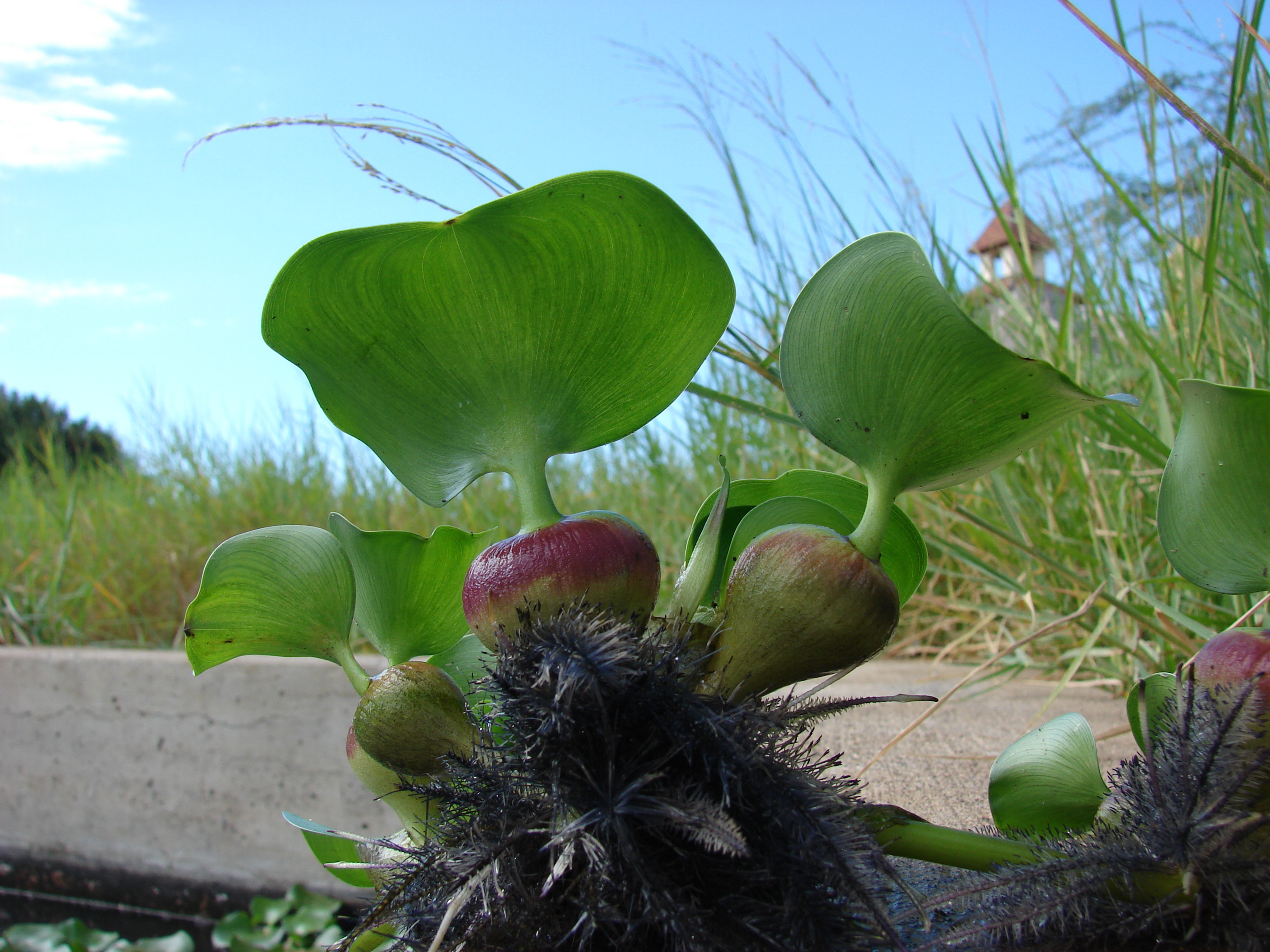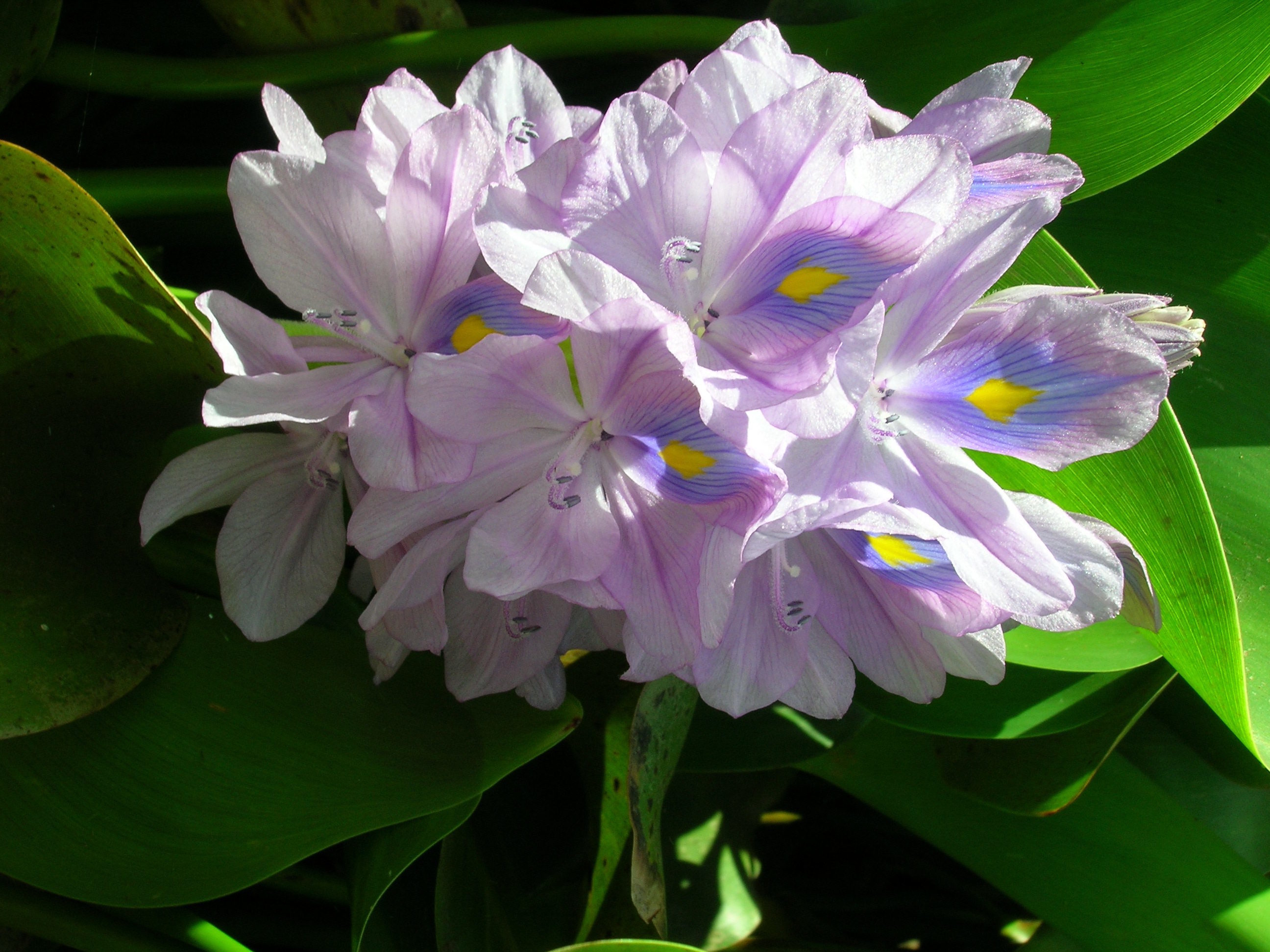Water hyacinth is one of the world's worst invasive weeds. It forms dense vegetation mats on the surface of water that block and choke waterways.
A widespread aquatic weed of warm freshwaters of the world, water hyacinth (Eichhornia crassipes) is native to the Amazon Basin in South America, and is now naturalised in New South Wales and Queensland, but also recorded in Western Australia and Victoria.
Water hyacinth was deliberately introduced into Australia around 1894 as an ornamental plant for garden ponds, and eventually found its way into waterways.
A serious outbreak occurred on the River Murray in South Australia due to a deliberate release at Ramco Lagoon in 1939, but it was eradicated in the 1950s after modern herbicides were developed.
Water hyacinth is still being grown and kept in South Australian backyards. Almost every infestation in southern Australia has resulted from a deliberate planting from the aquatic trade or disposal of unwanted plants.
What you can do to help stop the spread in SA?
If you see water hyacinth for sale, swapped or traded please help protect our waterways and report it to Crime Stoppers SA.

Why is water hyacinth a problem?
The problems are:
- dense plant mats which cover and choke water surfaces
- an increased loss of water through transpiration
- reduced water quality as rotting vegetation depletes oxygen and fouls the water
- altered or destroyed natural wetlands and habitat for water birds, fish and bugs as light levels, temperature and oxygen are reduced
- restricted access to water for stock and wildlife
- a breeding ground for disease-carrying insects, and
- restricted recreational activities (e.g. boating and fishing) and interference with irrigation systems.
What other names does water hyacinth have?
Widely cultivated as an ornamental plant, this perennial aquatic weed is also known as: lilac devil, Nile lily, bèo tây, bèo lộc bình, bèo nhật ban, po piu, dai soy ping, pickerelweed, water orchid, jacinthe d’aeu, mbekambekairanga, lirio acuatico, jacinto de agua, floating water hyacinth.
What does water hyacinth look like?
Water hyacinth is an aquatic herb 30-65cm high. It mostly free-floats, and sometimes attaches to the substrate underwater, with black to purple feather roots trailing in the water.
This weed has glossy green, thick flat leaves that radiate from the base to form a rosette, some with a swollen buoyant base to the leaf stalks. Flowers are a showy bluish-purple colour with a distinctive yellow blotch on the upper petal, on a short erect stem.

How does water hyacinth spread?
Water hyacinth reproduces by waterborne plant parts and seed. Plants form roots at the nodes, which break away, drifting downstream to form new colonies. It is helped along by its buoyant leaf bases, with leaves also acting as sails.
Water hyacinth grow quickly and can double in just 2 weeks.
Seeds can be spread by birds and vehicles.
The weed prefers still or slow-flowing water, including rivers, swamps, reservoirs and farm dams. It can survive cold conditions including occasional light frosts, but thrives in nutrient-rich, subtropical and tropical conditions. It doesn't survive in saltwater.

Is water hyacinth illegal?
Yes, water hyacinth is a declared weed under the Landscape South Australia Act 2019, and the following rules apply:
- 186(1) Prohibiting entry to area; (2) Prohibiting movement on public roads
- 188(1) Prohibiting sale; (2) Prohibiting sale of contaminated goods
- 190 Requiring notification of presence
- 192(1) Land owners to destroy the plant on their property
Water hyacinth is considered an ‘alert weed’ in South Australia. This means that the declared plant is not yet established in South Australia, but poses a serious threat.
Observations of weeds can be entered into iNaturalist, an app which can assist with identification of species.